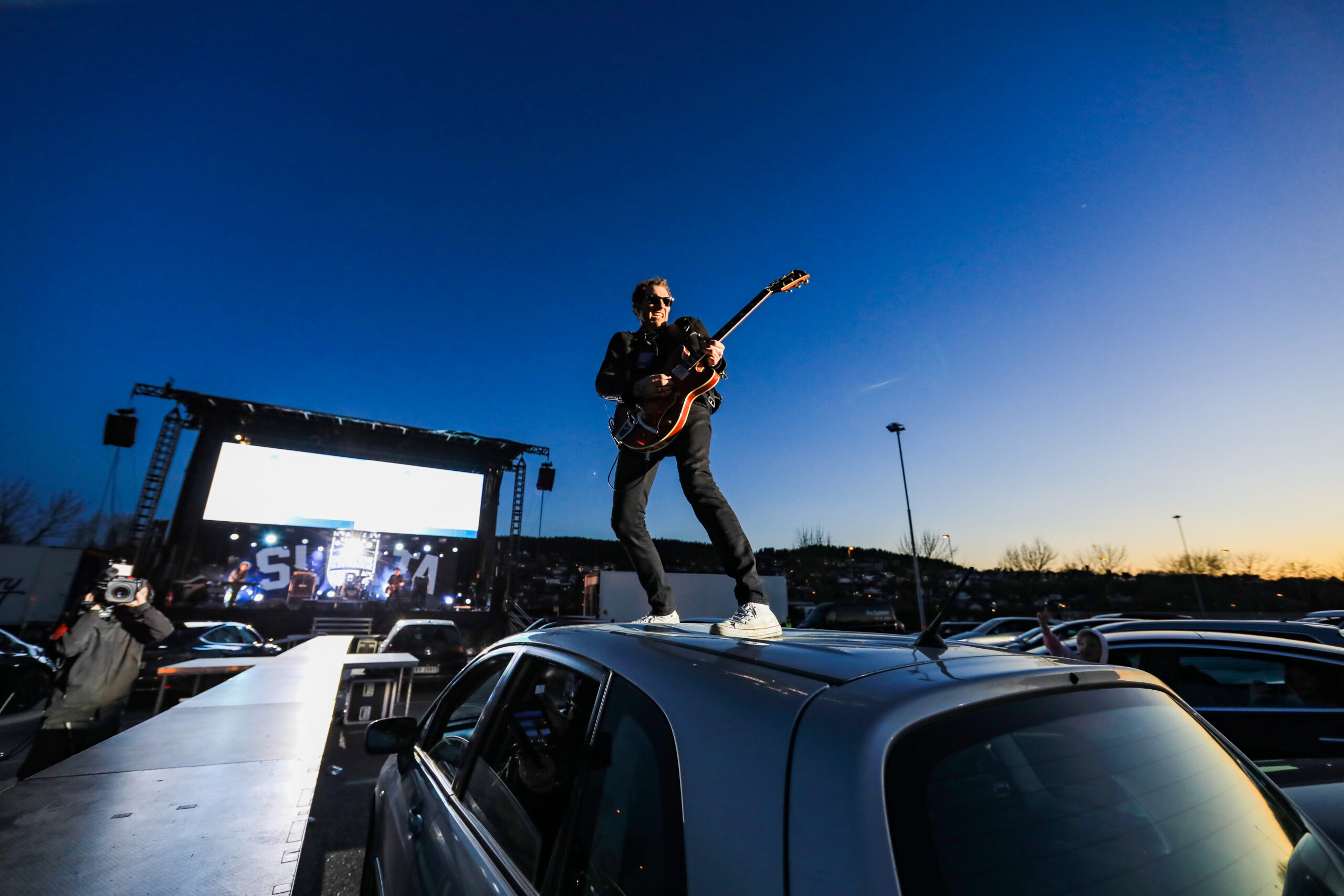The Streamy.no journey started a day after the Norwegian government shut down the country to stop the spread of COVID-19. All concerts, theaters, bars, restaurants, and other types of public gatherings were effectively shut down. The Norwegian people lost every single opportunity to experience live performances. This is where Streamy starts: an idea to take live performances into the digital world.
The very first step in the journey was that a previous customer of Servebolt called our very own Thomas Audunhus and asked: “How hard would it be to set up a streaming platform for music and cultural experiences?”. Thomas let the thought sink in and at the same time, started to iron out a plan for how this platform could be built.
10 days later, the platform was live and functional.
Needed to deliver something functional and scalable, fast.
For this platform to work, there needed to be a lot of functionality in place:
- A way for the audience to buy tickets to live streams
- A way to do marketing efficiently
- A way to make sure only the ones with a ticket to a show got to see a show
- A player to show the live stream
- A way to get the live stream into the player
In addition to all this, everything needed to work at scale and with large peaks in traffic. There would be peaks in the time before and during every show and peaks when the platform got media mentions.
Scaling was the biggest challenge
Creating the necessary functionality was not the real challenge. The challenge was to get it to work at scale at peaks of unknown scale and make it work in a short timeframe. At the time, no one knew how long the crisis and shutdown would last. And most likely, a lot of other teams were working with the same idea.
A platform like this needs to scale multiple parts of the architecture:
- The website, store, and order flow
- The player
- The delivery system of the stream
In most projects, delivering something fast usually means you have to take shortcuts. Shortcuts usually come at a cost. “The key to making this platform work was to take the right shortcuts, which would not come at the cost of the ability to scale,” Thomas says.
The Streamy scaling needs
Process orders
An eCommerce platform was needed, with the appropriate payment integrations to support the most popular payment methods in Norway. The platform needed to scale to handle orders every second.
Pageviews
The platform needed to scale to the point where it could deliver multiple page views every second. Thomas knew that this concept could attract a lot of media attention and, therefore, a lot of traffic.
Scalable transcoding of the input video
For the platform to work, scalable transcoding of video input into multiple resolutions and handling multiple video inputs at the same time was needed.
Scalable distribution and delivery of the video
After the transcoding was done, the video needed to be distributed to the audience. This would require bandwidth at a large scale.
The Streamy architecture
The platform is split into two parts; the website and the video distribution. The website handles the content, the order and payment process, and mostly everything else the customer sees besides the video and the video player.
The website was built using a combination of WordPress and WooCommerce and placed on Servebolt hosting. WordPress and WooCommerce enabled Streamy to have a fully functional system for receiving orders and processing payments in a short timeframe.
WooCommerce was extended to handle products that were neither physical nor virtual downloadable, but access to the page where the specific player showing the live event would exist.
The website was placed on Servebolts Enterprise hosting and configured with caching just like any other site Servebolt hosts using the Servebolt Optimizer. In front of the Servebolt hosting stack, we put Cloudflare and configured Cloudflare to handle caching of every non-unique pageview. Just like any Servebolt customer with Cloudflare from Servebolt is configured. Streamy was now ready to scale.
Drive-in concerts
One week into this project, after the platform prototype was ready and the website was public, the Streamy team got in touch and teamed up with Bary. Bary, being a technical supplier to concerts in and outside Norway, lost all its business overnight due to the COVID-19 shutdown and needed to think differently to keep business running.
How can one still do concerts in this situation?
The solution may be simple in retrospect, but at the time, it was highly innovative and never before done at scale with live performances. Instead of having the audience in a regular venue, you build a venue where the audience never leaves their car. And instead of having a large PA system distributing the sound from the stage, you utilize the FM band to distribute the sound into the car’s radio.

There is a natural–and quite low limit– as to how many cars you can fit into a large space and still make sure that:
- Every car is at a safe distance from other cars
- Every car is at any point in time able to leave the area
- Every car has a good viewpoint of the stage
On the live stream, however, there was no limit to how many could attend the show.
The streamy platform was extended to support tickets to the drive-in
The Streamy team, which included Thomas at this point, did not want to have customers buy car tickets to the drive-in in one place and streaming tickets somewhere else. Everything needed to happen on the Streamy site so that the marketing would be more effective. The Streamy platform needed to handle physical tickets as well as streaming tickets.
Within 24 hours, the platform was extended to support tickets to a physical show, including tickets with a QR code and an app for the crew at the entrance to scan, validate and process the tickets.
The launch
Already at the first event, a concert with the Norwegian rap group Klovner i Kamp, the platform was put to the test. In the 8 hours before the show, the platform delivered pageviews to tens of thousands of visitors, resulting in hundreds of thousands of pageviews. Most of them the hour before the show started.
At peak, the platform processed an order every 8 seconds in addition to handling all the traffic that did not result in an order. The massive peak in traffic was the result of media coverage from all major news outlets in Norway. The concert was covered in all national newspapers. All major TV stations were broadcasting live from the concert before the show started.
“The peak in traffic is something Servebolt is used to handling. The launch of Streamy wasn’t something new for Servebolt. We do this every year on Black Friday”, Thomas says.
Infrastructure as a Service
The COVID-19 crisis created a completely new market and introduced a lot of unknowns.
- How many will be visiting the site?
- How big will the traffic peaks be?
- Will people click and browse the site more than before the crisis?
All these and many more were questions that Thomas had to ask himself. He couldn’t ask anyone since no one had done this before in a crisis situation. “When you have too many unknowns, you are left with only one scenario you can prepare for. Worst case scenario”, Thomas says.
Though biased, Thomas knew Servebolt’s infrastructure would be the perfect fit and that ит was as close to “plug and play” as possible. He underlines the importance of not having to worry about scaling and infrastructure in the early phase Streamy was in.
When we started, every piece needed was just on a to-do list. To easily do, what for most others is the hardest part of building a technology-based concept, meant that we could focus on other things. Scaling a platform like this would be hard and/or time-consuming on most other infrastructures.
– Thomas Audunhus
When looking at the numbers from the first 60 days of operation, one must say that there is a reason to be happy about the result. Streamy.no has achieved an 8% conversion rate, and it has since launch only increased. In the last 14 days, they have reported a conversion rate of 10%.

“Our conversion rate is proving that the choices we have made were right and where we decided to put our focus was the right place.”
“I don’t think we would be able to achieve the same results, both in sales and successful events, in the timeframe we did if we would have to spend time maintaining and scaling our infrastructure. We can now handle almost any load. To be able to smile instead of sweat when you see the Google Analytics Real-Time Users metric surpass 5000 users is a luxury and a competitive advantage for us, and that would most likely not be possible on other infrastructure”, Thomas says.
The journey continues
Since its launch, Streamy has done over 20 concerts and live shows. Spanning from Drive-in concerts to more TV-like studio productions with performers you would usually see on a comedy stage. They have sold over 10,000 tickets in total and kept both performers and crew at work.

Thomas makes it clear that Streamy is not a product of the COVID-19 crisis, it’s a product of the COVID-19 crisis. Streaming live events will not stop just because we’re clear of the crisis. This is the new way of consuming live events.
Streamy believes that you will consume more live experiences digitally than you consume physically at a venue, but you will also consume more live experiences in total. Streaming is a supplement, making it easier for people to consume not 2 or 3 live events in a year but maybe 2-3 a month.


